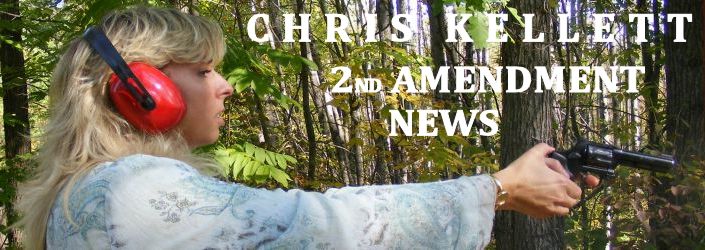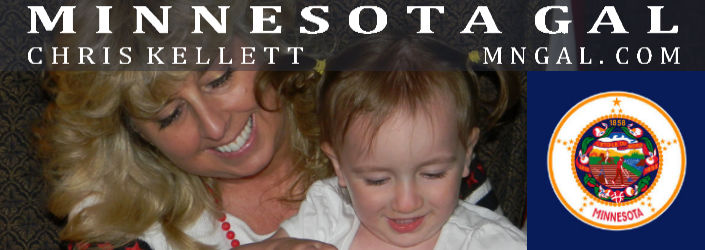Is it Safe to Shoot a Gun While Pregnant?
Shooting While Pregnant: Dangerous or Not?
By Elizabeth Kennedy and Fabrice Czarnecki, M.D.
Unfortunately, there are no definitive studies that clearly answerthis question.
When this topic first came up this author contacted several respecteddoctors for their opinion (including the co-author of this article)as to whether a pregnant student should participate in a firearmstraining
course for women. The doctors we contacted seemed to agree thatthere was no reason why she shouldn't shoot. We knew the rangewas lead-free and the ammunition was frangible, and with thatproviso, the doctors all agreed.
.
Then someone brought up the question of the noise, and no oneseemed to have any answers as to whether that could harm the baby,and thus began a quest to find out the truth about shooting andpregnancy.
This is an important topic for women in law enforcement, andright now, EVEN IF agencies do have a policy in place, that policyisn't based on factual information that comes from studies onshooting while pregnant. (See sidebar on Policy.) Firearms instructorsand range officers in most police departments don't have medicaldegrees, and so armed with whatever knowledge and experience theyhave, they make their best guess. That is, unless an order comes"down from above" which usually means
the lawyers had a hand in it. It' strictly liability protection,but if that is in the best interests of mother and child, that'sfine.
Many experts in the field share the same sentiments regardingtraining courses. Massad Ayoob, a widely regarded expert in theindustry says: "I recall one obstetrician writing a few yearsago that you shouldn't worry about it. That said, I can usuallytaste lead after I've been on a 'lead free range.' And I'm nota fetus. My own gut reaction is not to do it."
But when it comes to qualifying to keep your job, it's a differentstory. Many experts, such as Lyn Bates, believe that it can bedone safely. Lyn is a competitive shooter, a firearms and selfdefense
instructor, Contributing Editor for Women and Guns, and Vice Presidentof AWARE (Arming Women Against Rape and Endangerment). While sheencourages pregnant women generally not to shoot, when it comesto a qualification for an officer, Lyn states:
I see no reason why a police officer should not be able to qualifywhen pregnant, because this usually involves a limited numberof rounds and a short duration on the range. Of course, this isprovided that some reasonable accommodations are made. [Some examplesare] using an outdoor range, using lead-free ammunition, wearingan appropriate mask with a special HEPA filter rated for lead,having someone else pick up spent brass, shooting alone on a range(instead of simultaneously with many other shooters putting leadinto the air), or using a simulation shooting system that doesnot use live ammo.
Following are some of the facts we found. Hopefully this willarm pregnant officers with the information they need to know whenfaced with the question of whether or not to shoot and/or qualify.Lead and Noise
It appears that the two major concerns are lead exposure and noiseexposure. In conducting our research, while we found very littlefactual information available on shooting during pregnancy, wewere able to find a good amount of data on exposure to lead andnoise during pregnancy.
Lead
There is an extensive body of research that indicates thatlead exposure is toxic to adults as well as a developing embryoor fetus. And we also know that lead is transferred from the motherto the fetus. Lead exposure has been associated with: decreasedbirth weight and head circumference, (even at very low exposurelevels), miscarriage, premature delivery and pre-eclampsia (asevere complication of
pregnancy) as well as causing behavioral effects in infants andchildren. One study stated that premature delivery and a decreasedgrowth stature "have all been associated with prenatal leadexposure at "acceptable" levels."
Armed with that information, it is easy to minimize lead exposurewhen using firearms, and knowledgeable firearms instructors havetaken steps to protect themselves from lead exposure with excellentresults. According to Lyn Bates, these are some of the ways thatshooters can get
high lead levels:
a.. Shooting on an indoor range, especially one that is inadequatelyventilated
b.. Shooting lead ammunition (and primers)
c.. Handling/loading lead bullets (including putting rounds withexposed lead tips into magazines)
d.. Cleaning up a range (especially picking up or sweeping materialfrom the floor or bullet trap area)
e.. Eating or drinking on a range
f.. Failing to thoroughly wash hands and mouth after shooting(or washing with hot water instead of cool)
g.. Failing to change clothes after returning home after shooting(especially on an indoor range)
h.. Failing to wear gloves when cleaning guns
Ms. Bates believes that lead exposure can be controlled, and sheis in
good company. Dr. Heiskell agrees. Lawrence E. Heiskell, M.D.,FACEP, FAAFP has ten years experience as a SWAT team physician,and is currently a Reserve Police Officer, as well as a firearmsinstructor and Medical Director or Heckler and Koch's TacticalEmergency Medicine Program.
Toxicity from other chemicals and heavy metals besides lead, shootingand cleaning a firearm exposes you to other chemicals, includingcleaning solvents, and other heavy metals, including barium, antimony,copper and arsenic. It is not clear, whether these chemicals aresafe or dangerous for the fetus, during or after a shooting session.Pregnant or not, it's just safer to conduct all firearm cleaningactivities outdoors or in very well ventilated areas.
Noise
Noise, especially very loud noise and chronic exposure toloud noise, is usually considered as detrimental during the pregnancy.In most European countries, health regulations forbid pregnantwomen to work in surroundings with a level over 80 dB continuousnoise and rapid impulse noise changes of 40 dB, which is muchless than the noise of a firearm. In the United States, the Departmentof Labor limits for impulse (not continuous) noise is 140 dB (Dept.of Labor Bulletin #334, 1971) with
additional regulations for ongoing noise. The sound levels offirearms are about 125-140 dB for rimfire rifles, 140-150dB forrimfire pistols, and 150-160 dB for centerfire rifles, pistols,and shotguns.
Intrauterine measurements in some studies showed that the fetuswas not significantly protected against loud noises. One study,in human volunteers, found noise only diminished by 10 dB at 4000Hz. As a
comparison, foam plugs generally offer a protection of 12 to 20dB, and are considered as the least effective hearing protection.However, studies involving sound can be suspect. Silencer manufacturers,who work very carefully with sound, will tell you that with smallpositioning changes in the microphones, you can dramatically changethe results of the tests.
Silencers/suppressors, although not readily available to the averagewoman, could be very beneficial to the pregnant officer who shootsa firearm, in that it can reduce the report of each shot by approximately30 dB. Unlike what we see on television, that's still pretty darnloud though, and you still need to wear good hearing protection.It does not totally reduce the noise of the firearm, and wouldnot stop the sound from reaching the fetus.
Numerous studies demonstrate that exposure to noise during pregnancy,has been linked to such disorders as miscarriage, intrauterinegrowth retardation, premature delivery (less than 37 weeks), decreasedbirth weight, hearing loss in babies and children, altered immuneresponse in the fetus and hypertension during pregnancy (a potentiallysevere disorder). Interestingly, one study showed that a combinedexposure to noise and lead seemed to have an increased toxicity,causing heart lesions, which was not observed for either of thoseagents in isolation. The question again, is "how relevantare the studies to our very specific question?" The answeragain, is "we just don't know." Is it something we wantto chance?
One thing we do know is that fetal response to sounds begins atabout 16 weeks, and the ear is structurally complete by 24 weeks.(At 25 weeks, a baby will move in rhythm to an orchestra drum!)According to The American Academy of Pediatrics, "the hearingthreshold (the intensity at which one perceives sound) is approximately40 dB at 27-29 weeks, and decreases to a nearly adult level of13.5 dB by 42 weeks of gestation." It would appear that eventhough the structures are all in place, the sense is not fulldeveloped until birth. We also don't know at what point the fetusis most susceptible to noise damage of the ear, whether it's duringthe first trimester, second or third.
Interestingly, "the vestibular system, [the part of the ear]designed to register head and body motion, as well as the pullof gravity, begins developing at eight weeks." It is believedthat "receptive hearing begins with the skin and skeletalframework, [and] is then amplified with vestibular and cochlearinformation as it becomes available. Hearing is clearly a majorinformation channel operating 24 weeks before birth."
Stress
One other aspect that we haven't addressed so far is the mindsetof the mother. Does shooting cause high levels of an unpleasanttype of stress or is shooting fun and exciting for the mother?Certainly how the mother feels emotionally about shooting willhave either a positive or negative effect on the baby as well.
Recommendations
Current scientific knowledge does not bring any evidence thatshooting is safe during pregnancy. While current data clearlyshows that noise and lead can be significantly toxic during pregnancy,we don't have any data that is specific to shooting and pregnancy.More research is clearly needed in this area. However, at thispoint, author Fabrice Czarnecki recommends that pregnant womendon't shoot, and avoid firing ranges.
It is the carefully considered opinion of the authors that pregnantwomen should evaluate the risks involved in consultation withher doctor. Obviously, shooting in self-defense if needed wouldbe recommended, but shooting on regular basis during pregnancywould just increase the risks to both mother and child. It isrecommended that pregnant women avoid working on or near firingranges where chronic noise and lead exposure would be an issue.Commercial shooting schools should carefully consider whetherto allow pregnant women on their courses, or on the ranges, andwith what safety measures in place. Gila Hayes of the FirearmsAcademy of Seattle does not allow pregnant women on the range,even as visitors.
Most of the experts agree that pregnant women should not cleantheir guns, to reduce exposure to chemicals. Guns should be cleanedby other people, away from the pregnant woman.
Law enforcement agencies and the military need to consider developmentof safer alternative solutions to live-fire qualification forpregnant officers, using systems like FATS simulators (or otherbrands), BeamHit, and Airmunition. The technology is now in placeto offer this. Agencies which allow their pregnant officers tocontinue to carry their firearm past their qualification can beliable; this protects the
officer and the agency. However, in some cases, the physical aspectsof qualifying could be inappropriate for pregnant women, remindsSgt. Greg Conrad of the New York State Courts, especially if thisis "including running, kneeling and shooting while prone."This will vary dependant on each state or agency's standards.
For the woman who must shoot while pregnant, we recommend:
- Discuss this with your doctor, and show him/her this article
- Use lead-free ammo (with lead-free primers)
- Shoot outdoors (to reduce exposure to noise and chemicals)
- Shoot the smallest possible number of rounds
- Wear a respirator
- Wash hands carefully (3 times) with cold water
- Do not drink/eat within 1 hour after shooting
- Use a silencer when possible
- Wear heavy clothing and or soft body armor covering the abdomen
Ken Cooper of Tactical Handgun Training of NY adds, "I wouldalso
recommend that the qualifying instructor separate the pregnantwoman from the other officers and qualify them separately"to minimize noise exposure from other shooters. Ken believes that,"Shooting, whether for work, pleasure or sport is inherentlydangerous. It is up to the individual officer to investigate allchallenges to her safety and the safety of her baby."
As one of our colleagues (a female police sergeant) recently remarked,"pregnancy is a temporary condition. Why risk it?" Dr.Heiskell stated, "As in any job, pregnant female police officersshould exercise good common sense and use extra care while onthe firing range to minimize risks of injury to the mother andthe fetus, and should follow department policies regarding pregnantfemales."
The authors would like to thank all of those who assisted withthe research of this article. The authors
welcome your comments and feedback.
About the Authors
Elizabeth Kennedy is a Founding Director of the American Women'sSelf Defense Association, as well as Vice President of ModernWarrior AE Defensive Tactics in New York, as well as an activemember of the American Society for Law Enforcement Training since1987. Contact Liz at mwarrior@nvbb.net .
Fabrice Czarnecki, M.D., M.A., M.P.H. is an Emergency Physician,and holds a Master's degree in Public Health. Fabrice is the MedicalAdvisor for the American Society for Law Enforcement Trainingand the American Women's Self Defense Association. Contact Fabriceat fczarnecki@hotmail.com .
____________________________________________________________________________
Lead toxicity
Lead is transferred from the mother to the fetus.1
Lead is known to be toxic to the fetus, and exposure duringpregnancy is associated with the following
disorders:
- Decreased birth weight and head circumference, even at verylow exposure levels2
- Miscarriage, premature delivery and pre-eclampsia (a severecomplication of pregnancy)3
- Behavioral effects in infants and children1
A study stated that premature delivery and a decreased growthstature "have all been associated with
prenatal lead exposure at "acceptable" levels."4
Toxicity from other products
Besides lead, shooting and cleaning a firearms will exposeyou to other chemicals, including cleaning solvents, and the followingheavy metals: barium, antimony, copper and arsenic.5 It is notclear whether these chemicals are safe or dangerous for the fetus,during a shooting session. They can be toxic depending on thereconcentration.
Noise toxicity
Noise is usually considered as detrimental during the pregnancy.In most European countries, health regulations forbid pregnantwomen to work in surroundings with a level over 80 dB continuousnoise and rapid impulse noise changes of 40 dB, which is muchless than the noise of a firearm.6 The sound levels of firearmsare about 125-140 dB for rimfire rifles, 140-150dB for rimfirepistols fire, and 150-160 dB for centerfire rifles, pistols, andshotguns.7
Intrauterine measurements showed that the fetus was not significantlyprotected against loud noises.8 One study, in human volunteers,found a maximal noise attenuation of 10 dB at 4000 Hz.9 In ewes,the noise attenuation was 20 dB at 4000 Hz, but the noise insidethe uterus was actually 2 to 5 dB greater at 250 Hz.10 As a comparison,foam plugs offer a protection of 12 to 20 dB, and are consideredas the least effective hearing protection.7
Exposure to noise, during pregnancy, is linked to the followingdisorders:
- Miscarriage11,12
- Intrauterine growth retardation and decreased birth weight12,13,14,16
- Premature delivery (less than 37 weeks)12,15,16
- Hearing loss in babies and children17
- Altered immune response in the fetus18
- Hypertension during pregnancy (a potentially severe disorder)12
Interestingly, a combined exposure to noise and lead seemsto have an increased toxicity, causing heart
lesions, which are not observed for either of those agents inisolation.19
Recommendations
Current scientific knowledge does bring any evidence that shootingis safe during pregnancy. In the contrary, current data showsthat noise and lead are significantly toxic during pregnancy.
We recommend that pregnant women do not shoot firearms, unlessin self-defense, and stay clear from shooting ranges. Commercialshooting schools should not allow pregnant women on their courses,or on the ranges.
Pregnant women should not clean their guns, to reduce exposureto chemicals. The guns should be cleaned by other people, awayfrom the pregnant woman.
Law enforcement agencies and the military should ban live firearmtraining during pregnancy, and
development of alternative solutions to live-fire qualificationfor pregnant officers, using systems like FATS simulators (orother brands), BeamHit, and Airmunition.
References
1.Gardella C. Lead exposure in pregnancy: a review of the literatureand argument for routine prenatal screening. Obstet Gynecol Surv.2001 Apr;56(4):231-8.
2.Osman K, et al. Toxic and essential elements in placentas ofSwedish women. Clin Biochem. 2000 Mar;33(2):131-8.
3.Winder C. Lead, reproduction and development. Neurotoxicology.1993 Summer-Fall;14(2-3):303-17.
4.O'Halloran K, Spickett JT. The interaction of lead exposureand pregnancy. Asia Pac J Public Health. 1992-93;6(2):35-9.
5.Dams R, et al. Element concentrations in the air of an indoorshooting range. Sci Total Environ. 1988 Nov 1;77(1):1-13.
6.Brezinka C, Lechner T, Stephan K. The fetus and noise. GynakolGeburtshilfliche Rundsch. 1997;37(3):119-29.
7.Shimm and Passamaneck. Shooting noise, hearing loss, and hearingprotection. IDPA Tactical Journal.
8.Gerhardt KJ, et al. Intra-abdominal sound pressure levels duringimpulse noise exposure in sheep. Mil Med. 2000 Feb;165(2):153-6.
9.Richards DS, et al. Sound levels in the human uterus. ObstetGynecol. 1992 Aug;80(2):186-90.
10.Gerhardt KJ, Abrams RM, Oliver CC. Sound environment of thefetal sheep. Am J Obstet Gynecol. 1990 Jan;162(1):282-7.
11.Zhang J, Cai WW, Lee DJ. Occupational hazards and pregnancyoutcomes. Am J Ind Med. 1992;21(3):397-408.
12.Zhan C, et al. A study of textile noise influence on maternalfunction and embryo-growth. Hua Xi Yi
Ke Da Xue Xue Bao. 1991 Sep;22(4):394-8.
13.Hruba D, Kukla L, Tyrlik M. Occupational risks for human reproduction:ELSPAC Study. European
Longitudinal Study of Pregnancy and Childhood. Cent Eur J PublicHealth. 1999 Nov;7(4):210-5.
14.Hartikainen AL, et al. Effect of occupational noise on thecourse and outcome of pregnancy. Scand J Work Environ Health.1994 Dec;20(6):444-50.
15.Luke B, et al.. The association between occupational factorsand preterm birth: a United States nurses' study. Research Committeeof the Association of Women's Health, Obstetric, and NeonatalNurses. Am J Obstet Gynecol. 1995 Sep;173(3 Pt 1):849-62.
16.Nurminen T. Female noise exposure, shift work, and reproduction.J Occup Environ Med. 1995 Aug;37(8):945-50.
17.Pierson LL. Hazards of noise exposure on fetal hearing. SeminPerinatol. 1996 Feb;20(1):21-9.
18.Sobrian SK, et al. Gestational exposure to loud noise altersthe development and postnatal responsiveness of humoral and cellularcomponents of the immune system in offspring. Environ Res. 1997;73(1-2):227-41.
19.Cary R, Clarke S, Delic J. Effects of combined exposure tonoise and toxic substances--critical review of the literature.Ann Occup Hyg. 1997 Aug;41(4):455-65.























